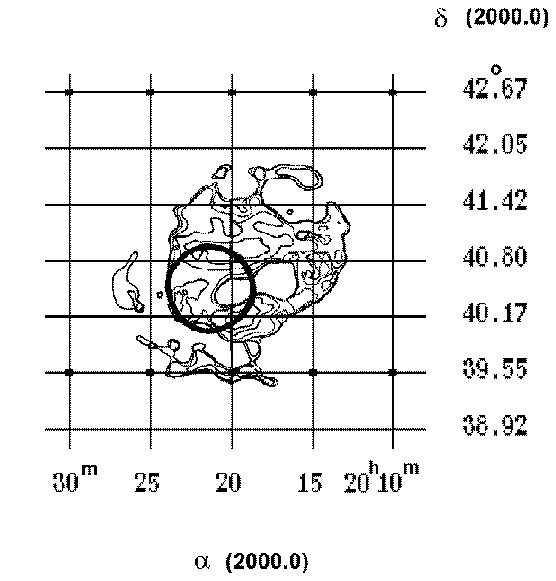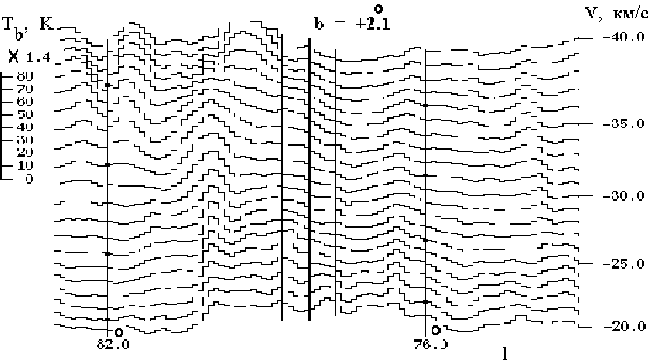|
Based on RATAN-600 21 cm line observations with an angular
resolution of 2.4' over a wide range of radial velocities, we analyze
the neutral-hydrogen distribution in the region of the supernova remnant

Figure 1. The brightness distribution of H I features at a radial velocity of +10 km/s after an extended background in the region of the Cygnus X radio source and SNR G78.2+2.1 has bee subtracted. The declinations of HI cuts are indicated on the right; the vertical and horizontal scales are different. The thin lines represent the annular H I structures related to the above objects (Gosachinskii et al. 1999). 
Figure 2. A schematic image of SNR G78.2+2.1 as constructed from the 21cm
data of Higgs et al. 
Figure 3. Same as Fig. 1 at radial velocities of -20, -25 and -30 km/s.
The thin lines represent the cavity that coincides in coordinates
with the outer X-ray shell found by Lozinskaya et al. 
Figure 4. The distribution of HI-line brightness temperature in the vicinity of G78.2+2.1 as constructed from data of the survey by Westerhout and Wendlandt (1982) with an angular resolution of 12' and a radial-velocity resolution of 2 km/s1. The source center (heavy lines) and the sizes at "zero" brightness temperature as inferred by Reich et al. (1990) at 11 cm are indicated. |